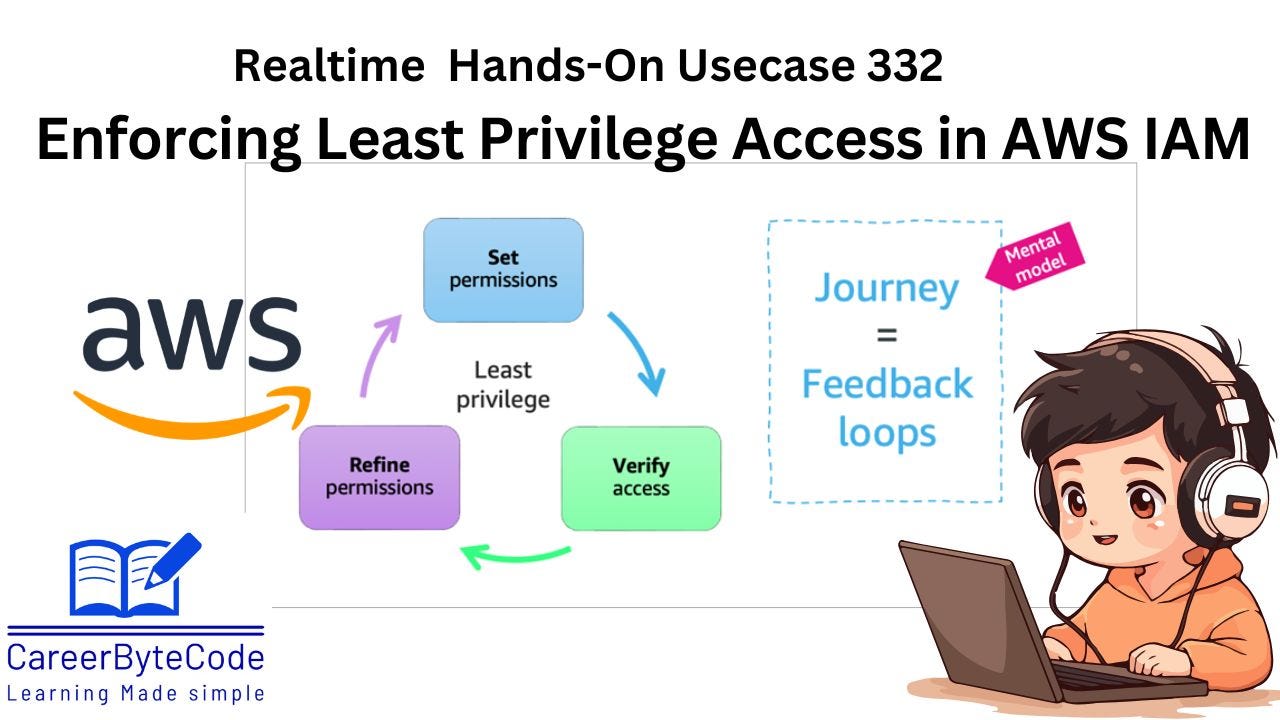Minimizing Security Risks in AWS: The Role of Least Privilege IAM Policies
In cloud environments like AWS, security is a primary concern. The Least Privilege Principle suggests that each user, application, or service should have the minimum level of access required to perfor
1. Why we need this use case:
In cloud environments like AWS, security is a primary concern. The Least Privilege Principle suggests that each user, application, or service should have the minimum level of access required to perform its tasks. By restricting permissions to only what is necessary, you reduce the attack surface and mitigate the risks of unauthorized access and data breaches.
For instance, an application that only needs to read from an S3 bucket shouldn’t be given permission to delete objects or modify any settings in the bucket. Similarly, a user who only needs to list EC2 instances should not have permission to terminate instances or alter configurations. This approach minimizes the potential impact of malicious activity, whether deliberate or accidental, and ensures compliance with security best practices.
In AWS, this is implemented through IAM (Identity and Access Management) policies. These policies define what actions can or cannot be performed on specific resources, and they are crucial to limiting access and ensuring secure operations within your AWS environment. By enforcing least privilege, you enhance the overall security posture of your cloud infrastructure.
2. When we need this use case:
This use case is particularly relevant when you want to:
Secure sensitive resources: Ensure that critical resources, such as databases, S3 buckets, and EC2 instances, are only accessed by users or services that absolutely need access.
Prevent accidental or intentional misuse: Minimize the possibility of users or services accessing resources outside their job function, thus preventing unintended modifications.
Meet compliance standards: Organizations often need to comply with regulations such as GDPR, HIPAA, or SOC 2, which require access controls and auditing. Implementing least privilege is a key requirement of such compliance frameworks.
Implement role-based access control (RBAC): If you are creating roles for different teams (e.g., Dev, Ops, and Security), you can ensure that each team only has the permissions necessary for their responsibilities.
3. Challenge Questions:
Keep reading with a 7-day free trial
Subscribe to CareerByteCode’s Substack to keep reading this post and get 7 days of free access to the full post archives.






